Cities are growing faster than the roads can sustain. Thus, the inescapable condition of traffic congestion is rising day by day. Whether you are driving in a big city or a small one, you will certainly cross a busy intersection. These intersections are often stressful for drivers because of long backups, merging lanes, traffic signals, and rash drivers generally in a big hurry than others.
So why do the roads feel more jammed up nowadays at the intersections? What can be done to reduce traffic congestion? Well, these questions can only be answered while we recognize and understand different types of road intersections prevalent across the world. Here are some common types of intersections and the way they work.
1. A Four-Way Crossing
The most common type of crossing is a four-way intersection. It generally appears in a perpendicular angle in most of the cities. In a four-way crossing, you’ll find four traffic signals at the front of each lane that turn green one by one. Thus a vehicle has to wait for all the three lanes to pass before the signal turns green. As the signal turns green the vehicle is allowed to move forward (straight) and to its right, and in certain cases it can also move left even when the signal is red.
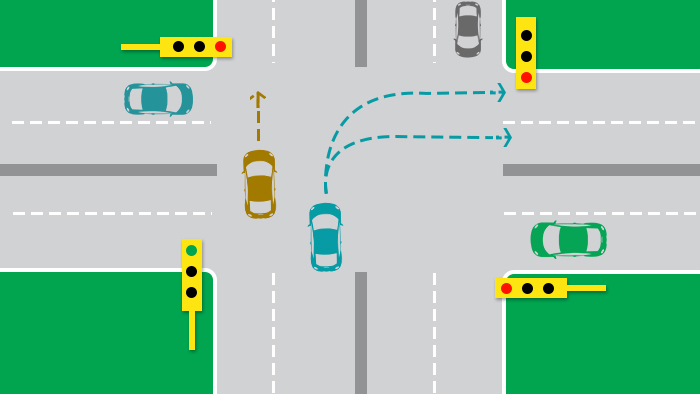
2. A Traffic Circle
A traffic circle is a roundabout usually found at the intersection of four or more roadways. Older-style traffic circles usually have traffic signals and stop signs to control the traffic. The traffic signals at these circles work in a similar fashion to those at the four-way crossing. When a signal turns green, a vehicle thus has to move around the circle to reach its destination lane. Traffic circles are generally larger than the four-way crossing and are designed in such a fashion to control the larger amount of traffic at the circles.
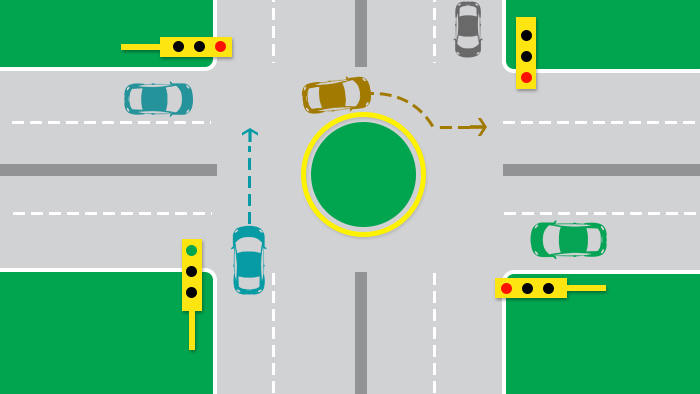
3. A Modern Roundabout (Prevalent in Western Countries)
This type of intersection is prevalent in many western countries like France, Australia, United States and New Zealand. A modern roundabout accommodates more traffic as compared to intersections having traffic signals. Similar to a traffic circle, modern roundabouts have a center island but they don’t have any traffic signals. It is a form of one-way intersection control, wherein vehicles move in counterclockwise circulation around a central island. Drivers enter the traffic already in roundabout, then turn right and exit to their desired street without stopping in between. Modern roundabouts hence lead to less stopping and lower overall delay due to no halts at the intersection.
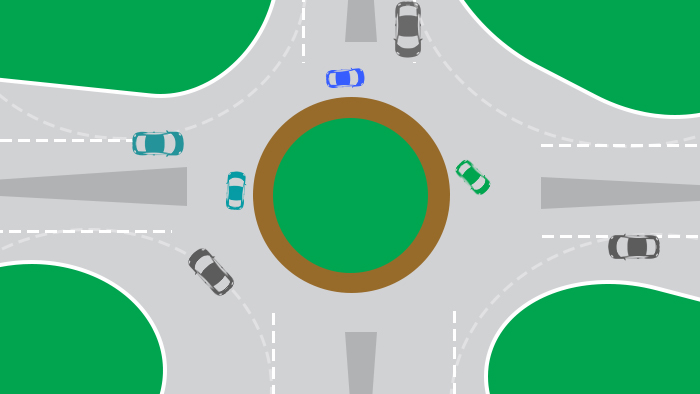
4. Uncontrolled Intersections
We primarily encounter uncontrolled intersections in rural areas and in those areas wherein, there is very low or no traffic predictions. These type of intersections do not have any stop signs or traffic signals. Thus, a driver has to slow down and apply his common sense while passing through such an intersection.
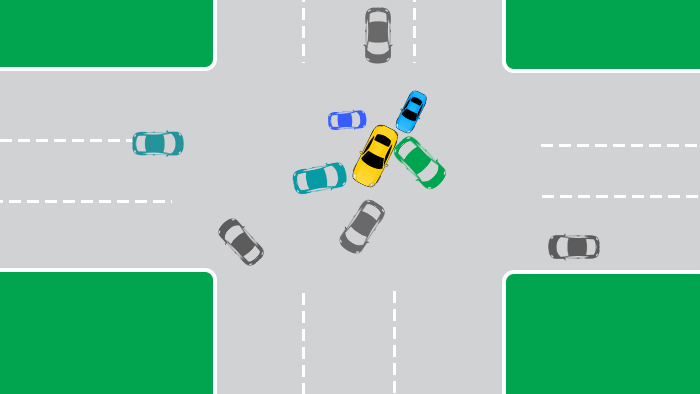
After reviewing the different types of intersections, the question still remains the same – How can we reduce traffic congestion at these most common types of intersections? And the answer to this question is ‘Smart Crossing’
Smart Crossing for smooth flow of traffic
A new patented concept called ‘Smart Crossing” is introduced by SmartUrbs to ease traffic congestion at four-way intersections. The concept is patented by the Indian Patent Office (IPO), Government of India (Patent no. 288778) and also patented in
In the existing 4-phase crossing, a vehicle has to wait for all the three sides to pass before the signal turns green. This results in elongated queues and congestion at every lane. Smart Crossing converts this conventional 4-phase traffic signal to 2 phase traffic signal, by turning the two opposite signals green at a time. It prohibits to take a right turn, resulting in a smooth flow of traffic from two opposite lanes at a time. In order to turn right from the crossing, one has to take a c-turn (which is nothing but a left turn followed by a u-turn) as shown in the diagram below.
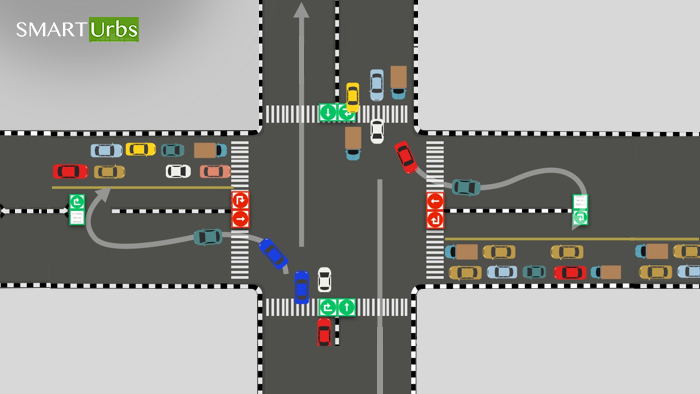
Smart crossing leads to reduction in traffic congestion,
Thus, it is imperative to focus on such concepts, that not only reduce traffic congestion problems but also require minimal infrastructural changes. The concept of smart crossing has also been tested and has showed some great results such as:
- Traffic congestion reduction by upto 80%
- Air pollution due to traffic reduced by upto 50%
- Chances of getting green light increased by upto 50%
Want to implement SmartUrbs in your city? Get in touch with us now!

